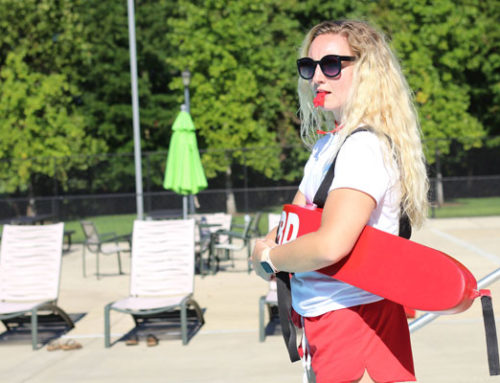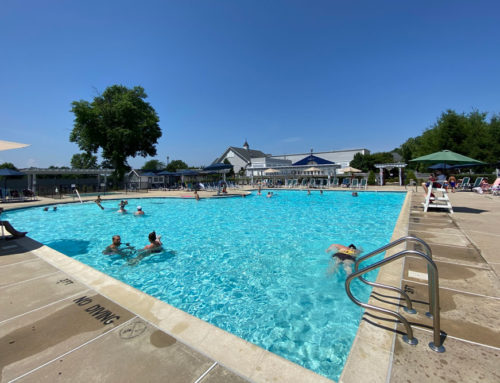The swimming pool construction industry has seen a healthy expansion growing 3.8% over the last five years. Developers know that offering active amenities such as a fitness center and a community pool will not only meet today’s buyer expectations, when they are thoughtfully designed, they sell units faster. After the developer is gone, the management of the pool will fall to community association board members and community managers. Operating a community pool comes with its own specific set of considerations, there will need to be a plan to address maintenance, staffing and health department compliance.
Here are the top 5 things for HOA board members and community managers to consider when making a swimming pool management plan:
Budget:
Develop an annual budget for your pool. Include items like annual upkeep, equipment maintenance, staff training, and insurance policies. You’ll also need to budget for maintenance purchases such as chlorine, test kits, reagents, first aid kits, flex tubes. Some equipment and maintenance are very predictable and some repairs are not foreseeable. If all of this sounds overwhelming, consider hiring a professional pool management company like American Pool. We can provide you with a free estimate on our services as part of your operating budget assessment. Plan on having money for repairs and proactive maintenance to extend the life of the pool structure and equipment. Consider a reserve study to make sure money is set aside each year for the full replacement of filter equipment and pool structure renovations.
Permits & Compliance Testing:
Most swimming pools require an operating permit to be filed with local authorities on an annual basis. Some locations also require additional paperwork like lifeguard certifications and/or pool operator credentials. Failure to submit your paperwork on time can result in fines or added fees. Appoint one person from the community’s board or community manager to handle obtaining the permit each year.
Even if there is no requirement for a preseason health inspection, an association representative should schedule a compliance test with a local health department inspector before each season. The inspector will appreciate the invitation and can point out any needed repairs or other issues. Knowing what needs attention before you opening the pool will help you plan and budget for future repairs.
It’s important that your pool be accessible to all community members, including those with physical challenges. Check with your association’s attorney to be sure your pool is compliant with all Americans with Disabilities Act (ADA) regulations. The act was last revised in 2016, and there are different parameters for your pool depending on if it was built before or after the guidelines went into effect, your attorney should be able to clarify which rules apply to your community’s situation.
Safety:
A secure swimming pool enclosure is one of the most important safety components of any facility. Access to the pool must be limited to authorized users during the scheduled hours of operation.
Is your pool area required to have an automated external defibrillator for cardiac emergencies? If so, make sure it’s well maintained, your entire staff knows where it is, and there are people trained to use it.
Make sure drain covers are VGBA Compliant, secured properly and are in good condition. VGBA compliance extends beyond the pool cover and may include layers of protection such as intervening switches or vacuum breakers to prevent suction entrapment of bathers.
Develop a set of safety rules that should be enforced at your community’s pool to further ensure safety. A few rules that are good to include are; no running, no diving headfirst into shallow water, and no rough-housing. There may be a minimum set of rules required by your state or local code.
Maintenance and Planning:
Proactive Maintenance extends the life of every part of the pool. It is always better to repair or replace an item before failure to avoid the loss of pool time and costly emergency repairs.
Neglected pool surfaces can become rough very quickly and be a source of scrapes or injuries to swimmers. Poor chemistry or aggressive acid washing are just two of the reasons a pool surface may fail early.
Keep an inventory of pool equipment and furniture at the end of each season. That way you’ll know what you have, how long it’s been in service and what needs repaired or replaced before the next pool season. Items to keep track of include; skimmer nets and baskets, vacuum heads, ladders, and chlorinators, as well as chairs, tables, lounges, bases, and umbrellas.
Winterize
If your pool isn’t in an area where it gets year-round use, it’s important to treat your water with a winterizing agent or algaecide over the winter season to keep the water clear and prevent staining. If you are not comfortable winterizing the community pool in-house, definitely hire a professional. Winter freeze can destroy pool equipment and plumbing resulting in thousands of dollars in repairs. You may also want to pull the motor to extend its life by not exposing it to harsh winter weather. Finally, cover your pool with a commercial grade cover to keep debris out and provide a measure of safety.






